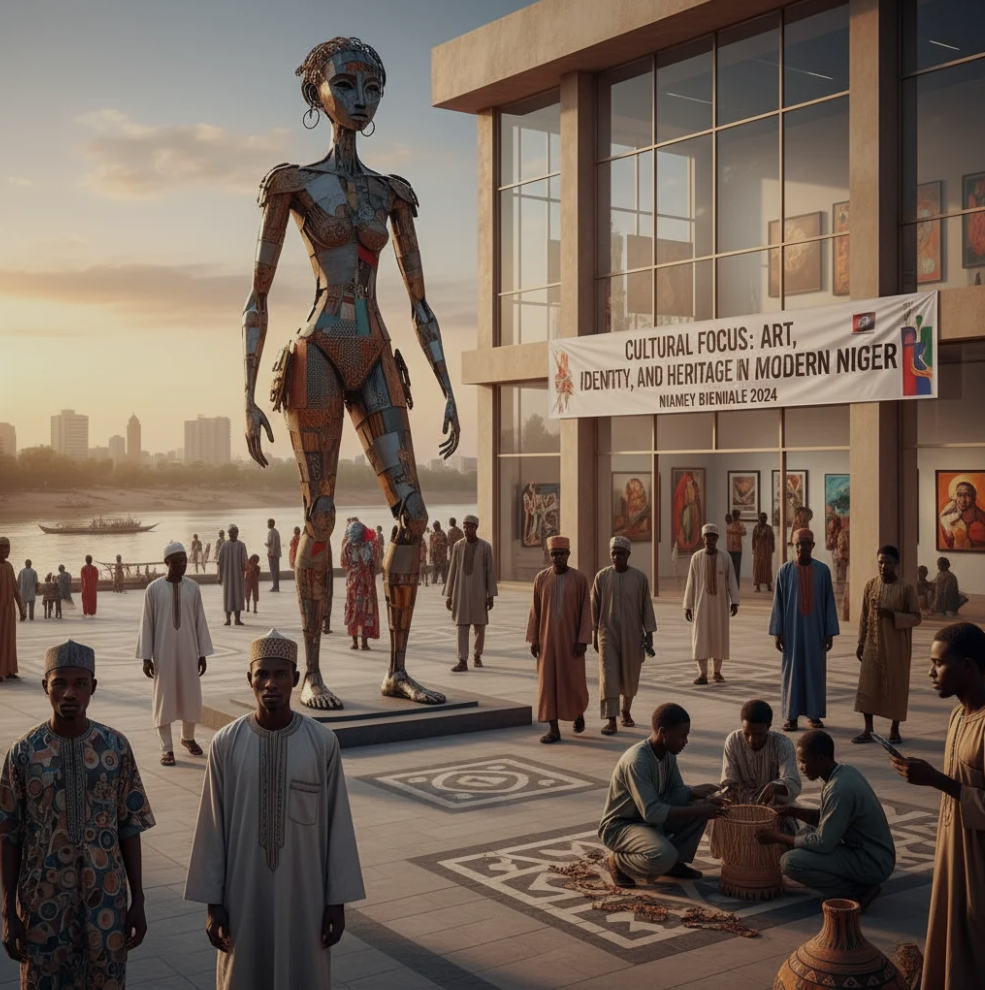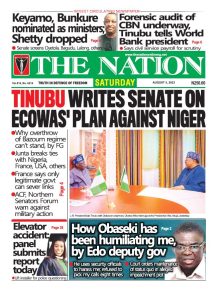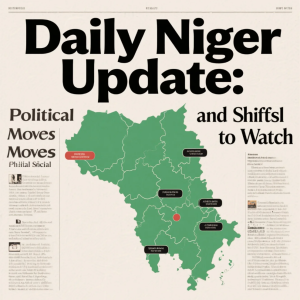In Niger, heritage isn’t a relic of the past—it’s a living, evolving story. Between the sands of the Sahara, the Sahelian plains, and the bustling markets of Niamey, art, identity and heritage intermingle. This convergence reveals how Nigeriens are preserving tradition while adapting to modern influences.
From leather-workers and silver smiths to contemporary artists and cultural festivals, the country weaves a narrative of continuity and change, where identity is both inherited and created.
🧶 1. Traditional Crafts: The Roots of Identity
Artisan skills stand as one of Niger’s most potent cultural anchors. According to “Discover Niger – Arts and Crafts”:
- Leather goods, textiles, metalwork and pottery reflect the craftsmanship of numerous ethnic groups. Niger
- Every region has its specialty—whether Djerma weavers making cotton blankets, Fulani embroidery, or Tuareg silver-jewelry.
These crafts are identity markers: they indicate region, ethnicity, role and tradition.
They also act as heritage in motion—while rooted in ancient technique, they adapt to modern demand, tourism and global markets.
🎨 2. Contemporary Art & Visual Culture
Heritage finds a new voice in modern artistic expressions.
Regions such as the Sahara’s Agadez and urban centres like Niamey showcase how traditional motifs meet contemporary mediums. For example:
- The article on “Iklan Aesthetics in Niger” shows how formerly marginalized Tuareg-affiliated groups (iklan) use visual culture to forge new identities, blending color, material and style. MIT Press Direct
- Museums like the Musée National Boubou Hama in Niamey integrate ethnographic heritage with modern exhibition forms, bridging national identity and tourism. Wikipedia+1
This blend demonstrates that heritage isn’t fixed—it evolves as communities assert agency, adapt aesthetics, and engage with global art dialogues.
🕌 3. Architecture & Built Heritage
Architecture in Niger likewise tells a story of identity, adaptation and heritage:
- In the desert town of Agadez, traditional styles incorporate mud-brick, tall minarets and desert-adapted techniques. karlobag.eu+1
- Architectural heritage becomes a visible representation of how communities relate to environment, faith and identity—while also embracing modern urban realities.
In turn, such buildings are more than structures; they embody continuity and transformation.
🎶 4. Festivals, Music & Cultural Expressions
Cultural life in Niger thrives in rhythm, performance and communal ritual:
- Desert culture documentation highlights music (desert blues), festivals (such as the pastoral nomad gatherings), and crafts tied deeply to identity. nigerheritage.org
- The Niger pavilion at international exhibitions highlights how ethnic diversity, fabrics, fashions and craft traditions feed into national identity and cultural economy. The Peninsula Newspaper
These events and expressions aren’t just entertainment—they are vehicles of heritage, belonging and change.
🔍 5. Heritage in the Face of Change
Niger faces significant pressures: climate change, desertification, migration, globalization.
Yet heritage and art provide resilience. For example:
- Documentation projects supported by research groups in Niger aim to preserve tangible and intangible cultural practices. asor.org
- The transformation of traditional dress, craft and visual styles illustrates how identity adapts under social and economic change. MIT Press Direct
Hence, heritage becomes not just about preservation, but about living relevance.
🏁 Conclusion: Heritage as Today’s Narrative
In modern Niger, art and identity aren’t leftover relics—they are active forces shaping communities and lives.
By weaving tradition with innovation, Nigeriens articulate a heritage that is both local and global, rooted and adaptive.
If you look at a hand-woven blanket, a silver pendant, a desert-blues track or a mud-brick mosque, you’re witnessing more than craft—you’re witnessing identity in motion.




